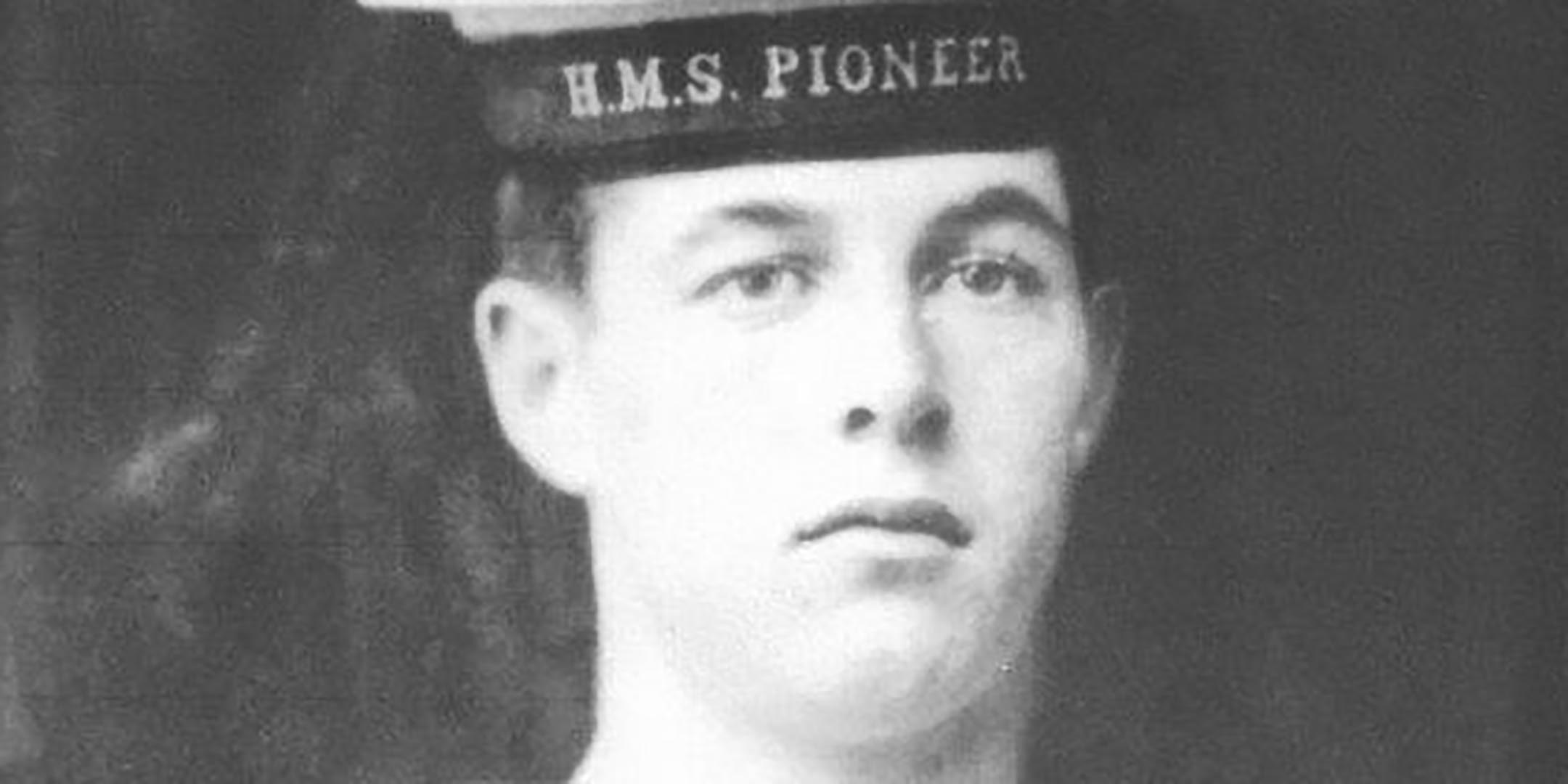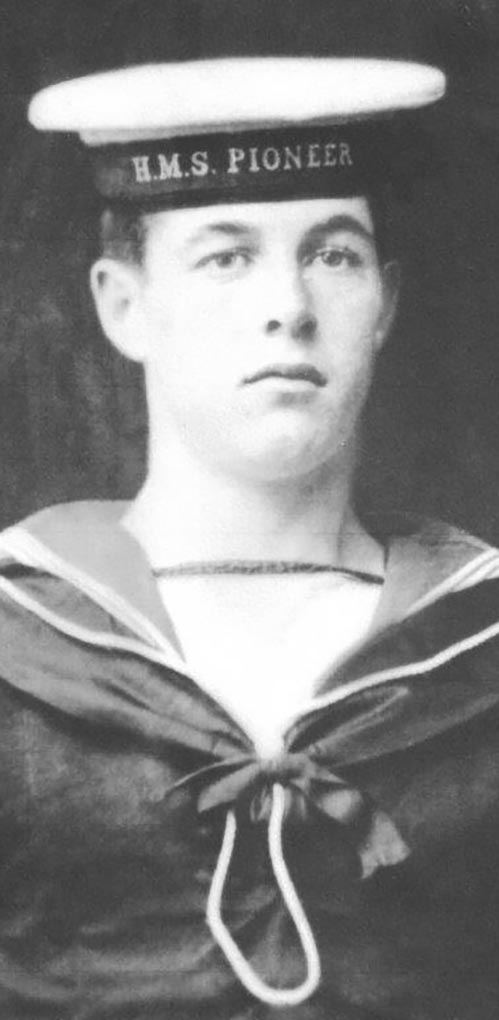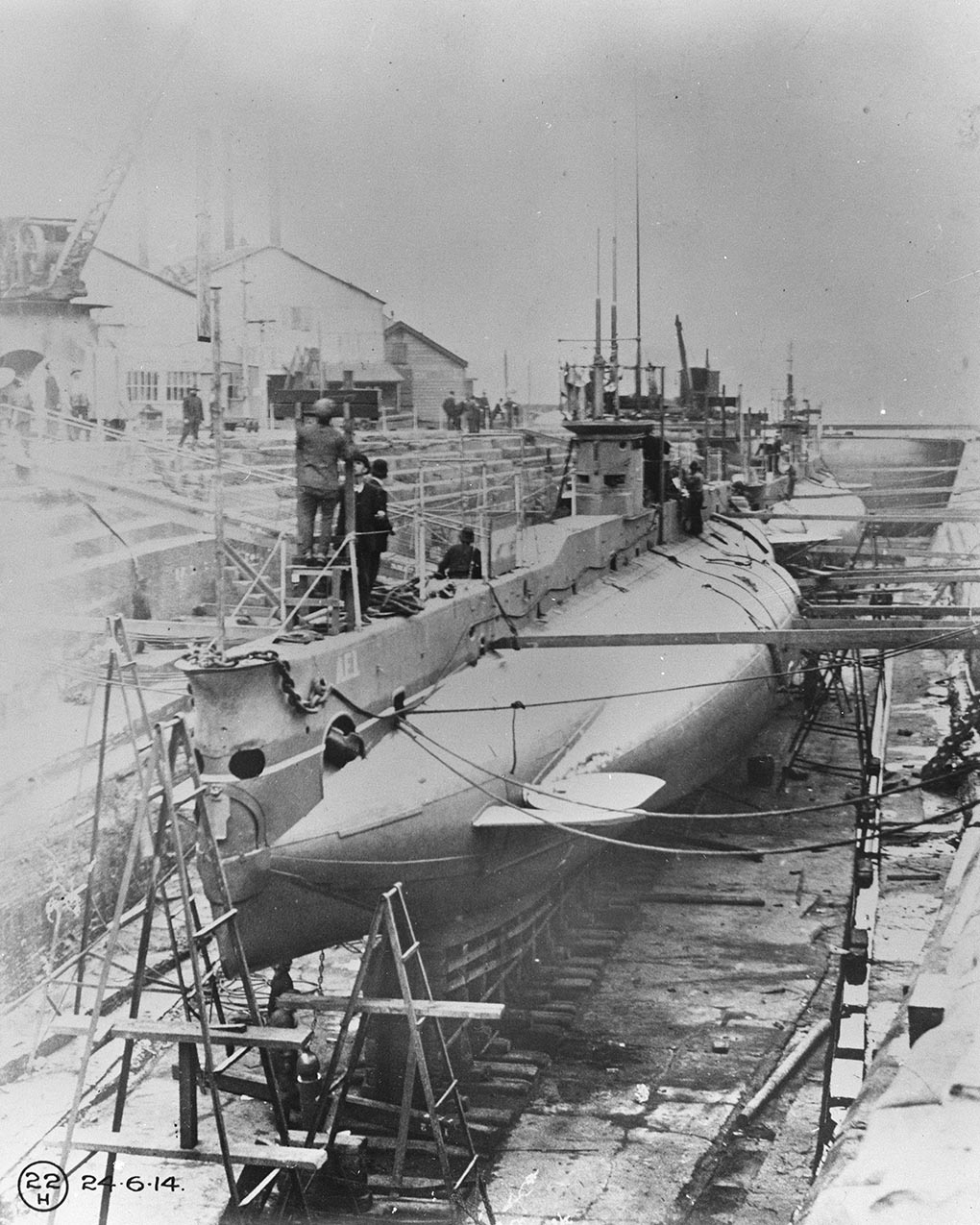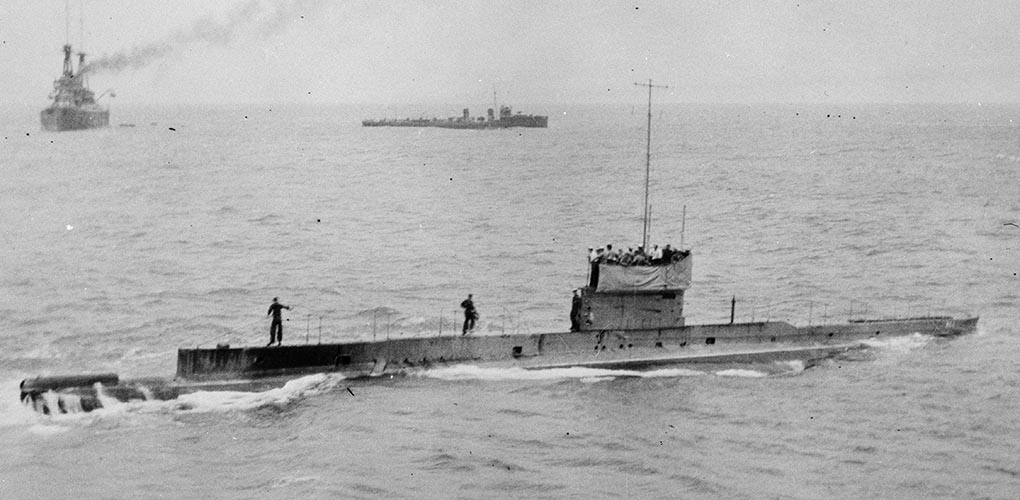
John Reardon
Since the wreck site of HMAS AE1 was found in December 2017, the stories of many of its 35 crew have been highlighted in the press. One crewman, however, has been largely overlooked. The only member of the submarine’s complement not born in either Australia or Great Britain, he was one of New Zealand’s first submariners, as well as the nation’s first combat casualty of World War I. His name is John Reardon.
AE1 was the first submarine commissioned into the fledgling Royal Australian Navy (RAN), and would also become the RAN’s first wartime loss when it mysteriously disappeared with all hands off Papua New Guinea’s Duke of York Islands in the opening months of the First World War. Among myriad discussions ignited by AE1’s discovery were those related to its 35 crew members. All frontline RAN warships that served in the conflict were commanded by officers who were (predominantly) British in origin, while their crews comprised a mix of mostly British and Australian ratings, as well as smaller numbers of sailors from other colonies and dominions within the British Empire.
In the case of AE1, 18 men – or just over half of the submarine’s crew – were Royal Navy personnel from Great Britain. Sixteen others were members of the RAN, of whom six were from the British Isles and had formerly served in the Royal Navy. Ten of AE1’s complement were Australian-born and hailed from New South Wales, Victoria, Queensland and Tasmania. A number of these men – ranging from the submarine’s commanding officer, Lieutenant Commander Thomas Besant, to Able Seaman James Thomas – have recently had their stories highlighted in the Australian press. One crewman, however, has been largely overlooked in the media coverage of AE1. Often (anonymously) referred to as ‘the New Zealander’, John Reardon was the only crewmember not born in either Australia or Great Britain, and his story – like those of his fellow crewmen – is unique and significant.

John Reardon, c 1910. Courtesy Torpedo Bay Navy Museum.
Childhood and early naval career
John Reardon was born on 9 February 1891 in Kaikoura on New Zealand’s South Island, the third son of Edward and Catherine Reardon. New Zealand was then in the midst of an economic depression and suffering from severe work shortages; consequently, Edward Reardon was unable to find employment in Kaikoura and sought work in the South Island port of Lyttelton. He later moved to Wellington, where he found work as a messenger in the Government Insurance Office. Catherine and the children remained in Kaikoura, where they were assisted by extended family. This support system proved essential when Edward Reardon suddenly collapsed and died of heart failure on Wellington’s Taranaki Street on the night of 12 November 1895. Reardon, who was ‘about 50 or 51 years of age’ at the time of his death, had recently suffered a bout of influenza, and a coronial inquest noted that ‘acute congestion of the lungs’ was likely a significant contributing factor(1).
Reardon quickly moved up the ranks, and within a year of commencing his five-year naval service he was rated an Able Seaman
Back in Kaikoura, Catherine and the children were devastated by Edward’s death, but with the assistance of extended family avoided destitution. Catherine eventually remarried and had four more children. John Reardon, meanwhile, was educated in Kaikoura and completed his Standard 3 exams before leaving school in 1906 at the age of 15.
He worked as a labourer and in the local fishing industry for a brief period before answering a newspaper advertisement in early November 1907 seeking recruits for the Pelorus class light cruiser HMS Pioneer. One of a number of warships assigned to the Royal Navy’s Australian Squadron during the first decade of the 20th century, Pioneer operated primarily as a drill (training) ship and was usually stationed in Sydney, but made occasional visits to New Zealand ports.
On 21 November 1907, Pioneer arrived at Lyttelton, where it tied up at the port’s ‘Skeleton Breastwork’ berth. Reardon was also in Lyttelton by this time, and reported to the ship for assessment. After a brief interview and medical examination, he was entered on Pioneer’s crew roster as a Boy 2nd Class – the lowest rank for incoming naval personnel aged 15 to 17.
Reardon quickly moved up the ranks, and within a year of commencing his five-year naval service (which officially began on his 18th birthday in February 1909) he was rated an Able Seaman. He remained aboard Pioneer during this time as the vessel transited between Australia and New Zealand, and made a lengthier return voyage from Sydney to Colombo, in Ceylon (modern-day Sri Lanka). Once back in Sydney in mid-1909, many of Pioneer’s crew were transferred to other ships, but Reardon was retained to assist with instructing the next influx of trainees – a testament to his skill and the high regard with which he was held by the ship’s captain, Commander William Frederick Blunt RN.
Those skills were put to the test in January 1910 when Reardon joined other crewmen from Pioneer in rescuing passengers and crew from the Union Steamship Company vessel SS Waikare. The steamer was returning to Dunedin from a tour of Fiordland when it struck an uncharted rock in Dusky Sound and began to sink. The captain beached the stricken ship, and Pioneer – which in a stroke of luck happened to be visiting the nearby port of Bluff – was asked to assist in a rescue operation.
All of Waikare’s 141 passengers and 85 crew were safely recovered from the wreck and embarked aboard Pioneer. Reardon was a crewman aboard one of the rescue boats and was awarded 12 pounds 10 shillings in prize money (the equivalent of about $1,700 today) for his participation.
On 6 February 1911, Reardon was posted to the Challenger class protected cruiser HMS Challenger along with 13 other Pioneer crewmen. All had volunteered to transfer to the newly established Royal Australian Navy and journeyed to England aboard Challenger during the latter half of 1912.
Following his arrival at Devonport, Reardon remained in Royal Navy service until 1 January 1913, when he joined the RAN as an Able Seaman for an enlistment period of five years. His naval records describe him as 5 feet 10 inches (178 centimetres) tall with dark brown hair, hazel eyes, and a ‘fresh’ complexion(2).
Reardon’s skin tone and flushed cheeks were among his most notable physical characteristics, and earned him the nickname ‘Rosy’ among his shipmates(3). Another physical attribute noted in his RAN service record was a tattoo on his left forearm that depicted ‘clasped hands over [an] anchor’(4).
Service aboard AE1
Upon enlisting in the RAN, Reardon was assigned to the London Depot to commence submarine training, which he completed on 30 March 1913. He also qualified as a Seaman Torpedoman, which meant he would have been directly involved with the operation and upkeep of torpedoes, torpedo tubes, and the compartments where the torpedoes and their warheads were stowed when not in use.
John Reardon was one of two New Zealand-born sailors to be trained for the RAN’s submarine service
Upon graduating, Reardon was nominated for service aboard AE1, which was then being completed at the shipyard of Vickers Ltd in the English port of Barrow-in-Furness. Following the submarine’s launch on 22 May 1913, Reardon joined its commissioning crew and participated in a series of sea trials and working-up voyages. He was one of two New Zealand-born sailors to be trained for the RAN’s submarine service (the other was Stoker Archibald Wilson, who was assigned to AE1’s sister submarine, AE2) and would be aboard AE1 during its record–setting 83-day delivery voyage to Australia in early 1914.

AE1(front) and AE2 in Fitzroy Dock, Cockatoo Island, Sydney, June 1914. Image courtesy Royal Australian Navy.
Following the submarine’s arrival at Sydney on 24 May, Reardon was assigned to the submarine depot ship HMAS Penguin. AE1 was transferred to Cockatoo Island Dockyard, where it underwent refit, while Reardon enrolled in additional training and qualified as a Torpedoman, 2nd Class. During this period he also had a narrow brush with death, when a naval pinnace on which he was a crewman collided with the steamship Coombar on 9 June.
The pinnace was transporting equipment from Cockatoo Island to Garden Island when it altered course to avoid a collision with the ferry Kal Kal near Milson’s Point. In doing so, it inadvertently steered into the path of Coombar, which struck the pinnace amidships and caused it to sink almost immediately.
Because the accident occurred at the height of winter, the waters of Sydney Harbour were very cold, and Reardon was described as ‘hampered with [his] clothes … half-frozen and almost exhausted’ when he caught a lifebuoy thrown from Kal Kal and was rescued(5). An AE2 crewman aboard the pinnace, Leading Stoker William James Groves, was not so lucky and drowned.
Reardon was later quoted by a local newspaper as believing the incident was ‘a good omen … that established for him the safety of a life at sea’ and that he was ‘convinced … he would not lose his life by drowning(6).
Sadly, this belief proved misguided: John Reardon would be lost at sea almost exactly three months later on 14 September 1914 and become New Zealand’s first-ever naval casualty and its first combat death of World War I. He was 23 years old.

The last known photograph of AE1, taken on 9 September 1914, five days before its disappearance. Image Sea Power Centre Australia.
References
- 'News of the Day’, The New Zealand Times, 15 November 1895.
- Record of Service, John Reardon (Official Number 7474). National Archives of Australia A6770 (Service Cards for Petty Officers and Men, 1911–1970).
- G Wright, Kaikoura Submariner: John (Rosy) Reardon. Printstop, Wellington, p 8.
- Record of Service.
- ‘Collision in Port: Pinnace Sunk’, Sydney Morning Herald, 10 June 1914, p 13.
- ‘Believed in Omens: Seaman Reardon’s Conviction’, [Sydney] Sun, 20 September 1914, p 1.
Further reading
White, M, 2015, Australian Submarines: A History (2nd edition). Australian Teachers of Media, Inc, St Kilda West.
Wright, G, 2014, Kaikoura Submariner: John (Rosy) Reardon. Printstop, Wellington.
This article originally appeared in Signals 126 (March 2019).
